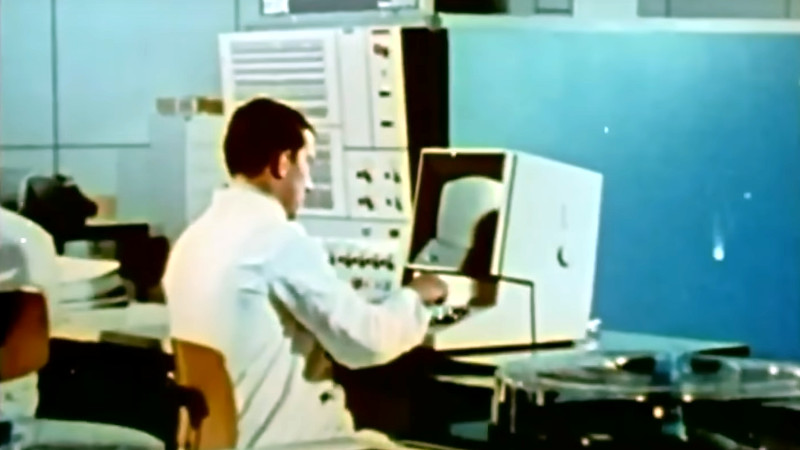
Before IBM was synonymous with personal computers, they were synonymous with large computers. If you didn’t live it, it was hard to realize just how ubiquitous IBM computers were in most industries. And the flagship of the mainframe world was the IBM System/360. For a whole generation that grew up in the late 1960s and early 1970s, a 360 was probably what you thought of when someone said computer. [Computer History Archive Project] has a loving recollection of the machine with a lot of beautiful footage from places like NASA and IBM itself. You can see the video below.
Not only was the 360 physically imposing, but it had lots of lights, switches, and dials that appealed to the nerdiest of us. The machines were usually loud, too, with a Selectric terminal, card punches and readers, noisy 9-track tape drives, and a line printer or two.
While even a supercomputer from the 1960s doesn’t seem very powerful today, the 360 holds up pretty well. Most of them were 32-bit machines although there was at least one 16-bit bargain model and one that did everything 8-bits at a time but still made you think it was churning out about 30,000 instructions per second. You could even join some of them together to get more power, although memory bus contention made that less effective than you might think. Some of the higher-end models used 64-bit memory, parallel execution, and virtual memory.
One hallmark of this family of computers is that it had sophisticated I/O channels that could interface a lot of devices to the CPU. Of course, you needed a lot of devices when a hard drive cost more than your house and would hold 5 or 10 megabytes or so. Memory ran from about 8K to 8M — quite the range. Usuallly, the computers were leased not bought, so price comparison is hard. But a very large System/360 Model 195 was quite fast, could multiprocess, and had a whopping 4 MB of memory. The cost? Somewhere between $7 and $25 million in 1971 dollars!
Computing was a different world back then. Raised floors and special air conditioners were the order of the day. We also probably should have been wearing hearing protection! Amazingly, as common as these were, not many of them have survived and many of those aren’t working. These days, DASD and IPL aren’t common terms in the computer business, but when the 360 ruled the data center, they were terms you heard all the time.
If you are lucky, maybe you’ll find one stuck in a barn one day. It could happen. Just try to make sure the barn is close to your house.
Retrotechtacular: The IBM System/360 Remembered
Source: Manila Flash Report
0 Comments